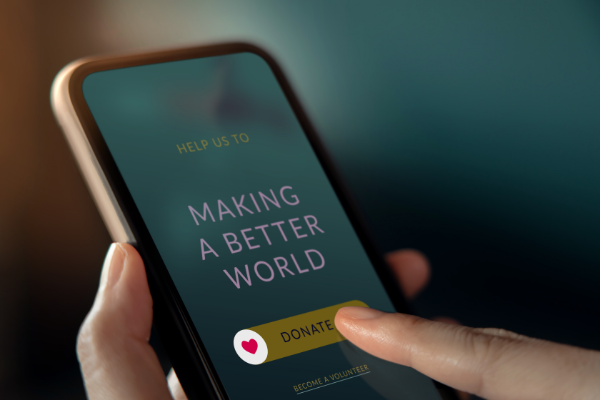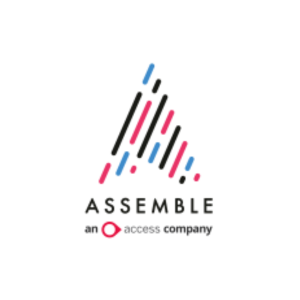Insights
INSIGHTS
All Topics
Charities should build digital projects around people
28 Jun 2021by Charity Digital
Digital projects are often viewed through the lens of the splashy impact that new tech can make. But lasting and sustainable impact is provided by solutions built around a charity’s service users and supporters
The Access Group have enabled thousands of not-for-profit organisations to run more efficiently and raise more money. Whether you’re attracting supporters or members, fundraising, managing visitors, controlling finances or dealing with staff, their integrated not-for-profit software makes it easy to do more.
Since COVID-19, charities have made huge strides in digital transformation. That transformation has often been out of necessity.
Charities have had to move service delivery online to meet the needs of their communities. They have had to switch from physical to virtual events to meet donor needs. And they have had to shift to digital fundraising to meet stakeholder needs.
Charities have learnt to become user-centred through necessity. They have focussed on user needs in order to ensure continuity of operations. And it is now essential that charities take that user centred approach into the future.
Digital projects must always rely on the human element. That’s something charities occasionally miss, as they get caught up with the latest trend, finding themselves adopting tech that is fashionable but not necessarily meeting the demands of users.
To ensure lasting impact, charities need to place user needs at the heart of their digital projects, regardless of size or form. That means meeting users where they are, effectively employing the tech they are using, ensuring continuity, and addressing digital blind spots.
User needs will differ for every charity. And digital projects will differ for every charity, too, as they attempt to find solutions to particular challenges. But all charities share something important in common. User needs should always be the driving force of digital projects.
Identifying user needs
Digital projects take various forms. It could be as simple as finding a quick solution to a small problem, or it could mean a complete overhaul of your digital output. It could be as simple as upgrading a CRM, or perhaps addressing a blind spot through tailor-made tech.
Digital projects often begin at the end, with charities working backwards. Charities start digital projects once they have identified a need, usually a problem that users are facing, services that users may need, or blind spots in their outputs.
User needs are not always obvious. But charities have plenty of information available at hand. Data can help you identify problems. Look at the data you already have – and you likely have lots. Check out past event sign-ups, membership data, gifts, and so on. Each small piece of information can be quantitively analysed to determine your user needs.
Charities may want to go further, gathering qualitative data alongside the quantitative. You can conduct further research. You could, for example, survey users, asking them a series of questions about your service. You could gather a small pool of users whose needs broadly reflect your wider user base.
Qualitative research gives charities more precise information. Such research tends to highlight problem areas, areas of improvement, and blind spots in your service.
The ongoing importance of continuity
User needs demand continuity. Research will often show that there are various elements of your service that has a strong and lasting impact that you need to preserve. Continuity may not be exciting, but it is essential for users. Some of the most important digital projects will be about finding solutions to potential problems that threaten continuity.
Shifts in the digital landscape, the marketplace, the workplace, and the wider economy can all threaten continuity. Broad social changes can thwart service delivery. Changes across the board can leave charities unable to meet existing user needs, something that the charity sector has so dramatically experienced since the arrival of COVID-19.
Continuity is vital. In 2020, for example, the Royal Medical Benevolent Fund (RMBF) needed to find a solution to meet user needs. The usual solutions did not work, due to the pandemic and the corresponding lockdown. The charity needed to continue supporting doctors and medical students facing hardship through financial, therapeutic, and other forms of support.
Everyday operations were suddenly under threat. Emily Hopkins, Head of Fundraising and Communications at RMBF, says that staff moving from the office to home were suddenly unable to user the CRM system, Access thankQ.
With support from the Access Group, RMBF had happily used thankQ for a number of years, but the previous version was only accessible through desktop computers or via a VPN.
RMBF needed a solution to meet user needs and ensure continuity. They spoke to Access, who helped them upgrade to the web-based version of thankQ, which allowed them to quickly pivot working practices and continue to support users.
RMBF uses thankQ not only as a central database for fundraising and volunteering, but also to manage work with beneficiaries. A seamless transition to the web-based version was not simply desirable, but necessary. Access ensured that the transition was seamless and ensured continuity for service users.
Secure continuity and look to the future
Digital projects are not always about new and fashionable tech. Lasting impact depends on the solutions that ensure charities consistently meet user needs. Once that continuity is ensured, charities can build.
Emily Hopkins at RMBF says, for example: “Our focus in the switch over has been on ensuring that we are able to have continuity. The next step is to explore the fundraising module to see how we can get best use out of it.”
Once RMBF ensured continuity, they could more responsibly look to the future. It’s the right decision. Indeed, charities need to remember that often the most important needs are the ones that are currently being met. The fashionable digital solutions can and often do work wonders, but lasting impact always depends on users.
Charities need to make the right decisions, ensuring users needs are always paramount.
How Access can help
The Access not-for-profit suite offers plenty of solutions to suit your charity’s needs. Access provide solutions that can support continuity, as we saw with RMBF, or solutions that can progress your mission using the latest innovation.
In addition, the Access Group has developed CRM software for many different charities and fundraising professionals. Their Access thankQ CRM is designed to help your charity grow income by using your time, donor data, and supporter relationships more intelligently.
Over 10,000 fundraising professionals use Access thankQ to improve donor relationships and increase revenue for their charity
Find out more
Click here to learn about the Access CRM
More on this topic
Recommended Products
15 Jan 2025by Laura Stanley
How to revisit your charity’s story in 2025Sponsored Article
10 Jan 2025by Ioan Marc Jones
How charities stopped centring service users
Our Events
Charity Digital Academy
Our courses aim, in just three hours, to enhance soft skills and hard skills, boost your knowledge of finance and artificial intelligence, and supercharge your digital capabilities. Check out some of the incredible options by clicking here.



















